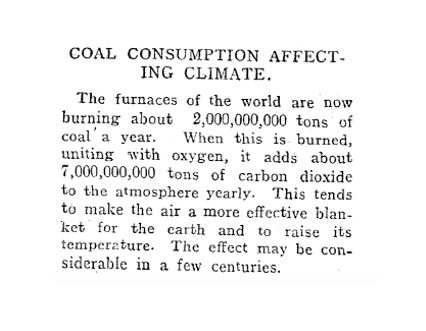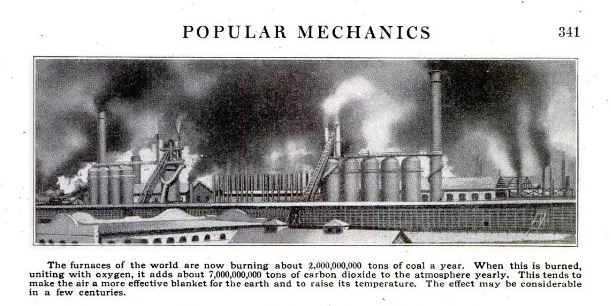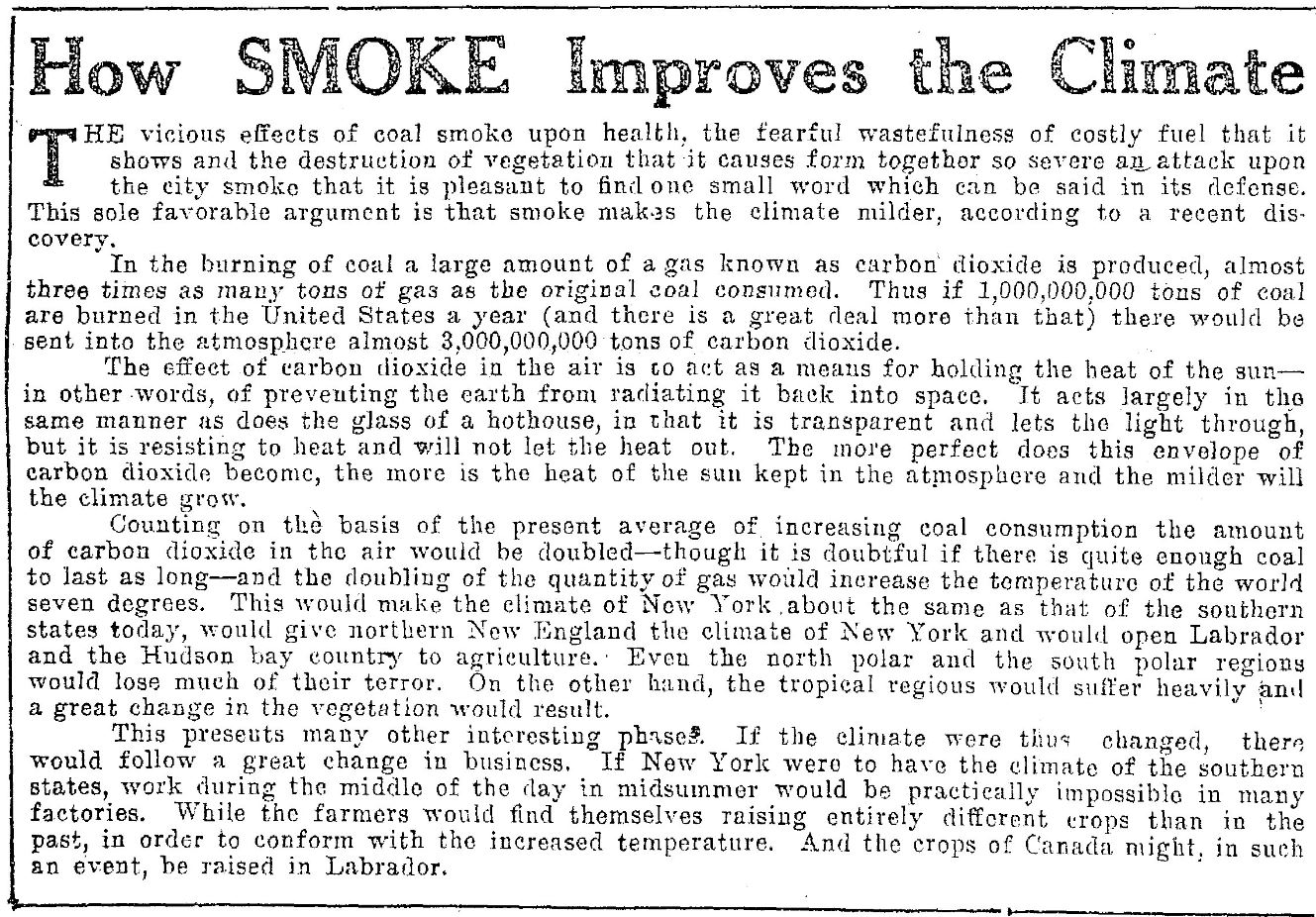
Date: 22 Aug 2022
"COAL CONSUMPTION AFFECTING CLIMATE"
On Wednesday 14 August 1912, readers of the Rodney & Otamatea Times (New Zealand) were greeted with the headline - "COAL CONSUMPTION AFFECTING CLIMATE."
Under tha banner of “Science Notes and News” on page 7 of the newspaper, the short article appeared under snippets on a very deep hole in Germany and on a new “machine for skipping” that not only “turns the rope but records the number of skips”. More than a century later the paragraph-long report has viral on social media over the summer.
“COAL CONSUMPTION AFFECTING CLIMATE, - The furnaces of the world are now burning about 2,000,000,000 tons of coal a year,” it began. When this is burned, uniting with oxygen, it adds about 7,000,000,000 tons of carbon dioxide to the atmosphere yearly. This tends to make the air a more effective blanket for the earth and to raise its temperature. The effect may be considerable in a few centuries.”
And that was it. The "Science Notes and News" continued with other articles such as the qualities of asparagus in light of the “awful odour which the use of this article of food causes in one of the bodily excretions”.
At the time the article was published, the CO₂ levels were around 295 parts per million molecules of air. In July 2022 the CO2 levels were 419 parts per million – more than 50% higher than pre-industrial times.
- In 2019, atmospheric CO2 concentrations were higher than ever than they have been in at least the last 2 million years [IPCC - State of Global Climate 2021].
- Concentrations of CH4 and N2O were higher than at any other point in time in at least 800,000 years [IPCC - State of Global Climate 2021].
- In 2021, Global Mean Surface Temperature was 1.11 ± 0.13 °C warmer than the pre-industrial baseline (1850-1900) [IPCC - State of Global Climate 2021].
- In 2021, the EU production of hard coal was 57 million tonnes, 79 % less than the 277 million tonnes of 1990 [Eurostat].
The 1912 New Zealand snippet was likely based on a four-page spread from Popular Mechanics magazine titled “Remarkable Weather of 1911: The Effect of the Combustion of Coal on the Climate – What Scientists Predict for the Future”, which drew from the work of Swedish scientist Svente Arrhenius and others.

Arrhenius did some basic calculations in 1896 to estimate how much the Earth’s temperature would change if we doubled the amount of CO₂ in the atmosphere. His paper, "On the Influence of Carbonic Acid in the Air upon the Temperature of the Ground", made an early calculation of how much warmer the Earth was thanks to the energy-trapping nature of some of the gases in the atmosphere. Understanding, data and modelling capabilities have increased greatly, but even at this early stage, there was some understanding that humans had the potential to play a significant role in changing the concentration of at least one of those gases, carbon dioxide (carbonic acid back then)
110 years later, the most recent IPCC Sixth Assessment Report notes that existing and currently planned fossil fuel projects are already more than the climate can handle. Responding to the report, the UN secretary general, António Guterres, said that “Increasing fossil fuel production will only make matters worse,” he said. “It is time to stop burning our planet, and start investing in the abundant renewable energy all around us.”
Some key points form the IPCC Report 2022
- It is undeniable that human influence on the climate has warmed our atmosphere – water and land. Far-reaching and rapid consequences for the atmosphere, oceans, cryosphere and biosphere have arisen.
- It is almost certain that man-made CO2 emissions are the main cause of the current global acidification of the open ocean at the surface.
- Each of the last four decades has been successively warmer than any previous decade since 1850.
- It is virtually certain that heat extremes have become more frequent and intense in most rural regions since the 1950s, while cold extremes have occurred less frequently and less severely. It is highly probable that man-made climate change is the main cause of these changes.
- Compared to 1850–1900, the global surface temperature is very likely to rise by 1.0°C to 1.8°C on average over the years 2081–2100 in a scenario with very low greenhouse gas emissions. With medium greenhouse gas emissions, the temperature will rise by 2.1°C to 3.5°C. In the scenario of very high greenhouse gas emissions, the increase will increase by around 3.3°C to 5.7°C. The last time the global surface temperature was 2.5°C or more above the 1850–1900 level was over 3 million years ago.
Other articles from the time, such as from the Cleveland Plains in July 2012, also point to the link between buring fossil fuels and a changing climate.
